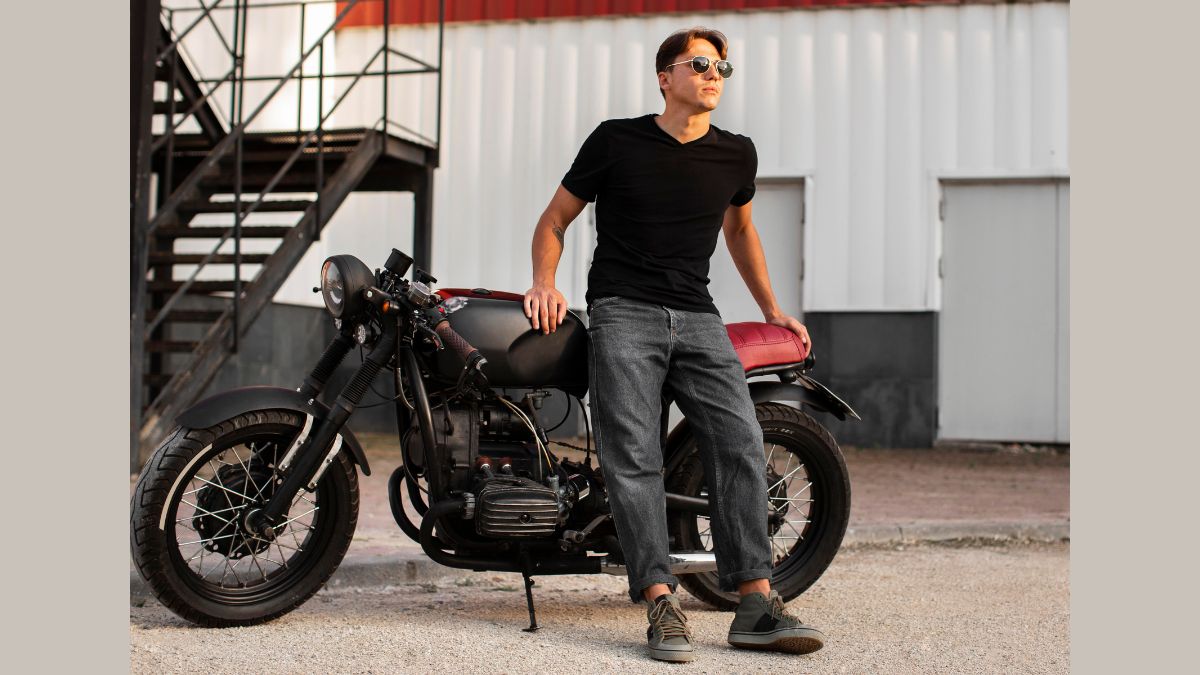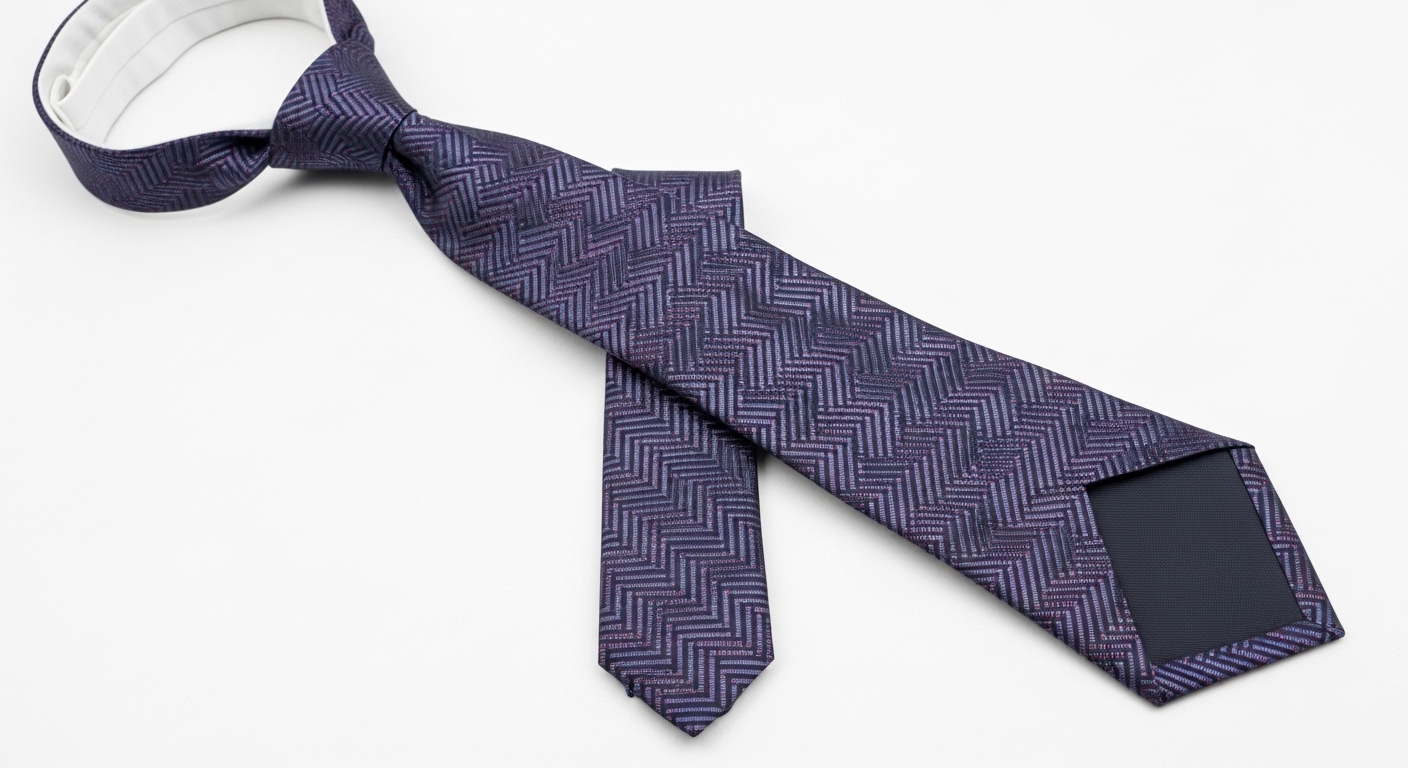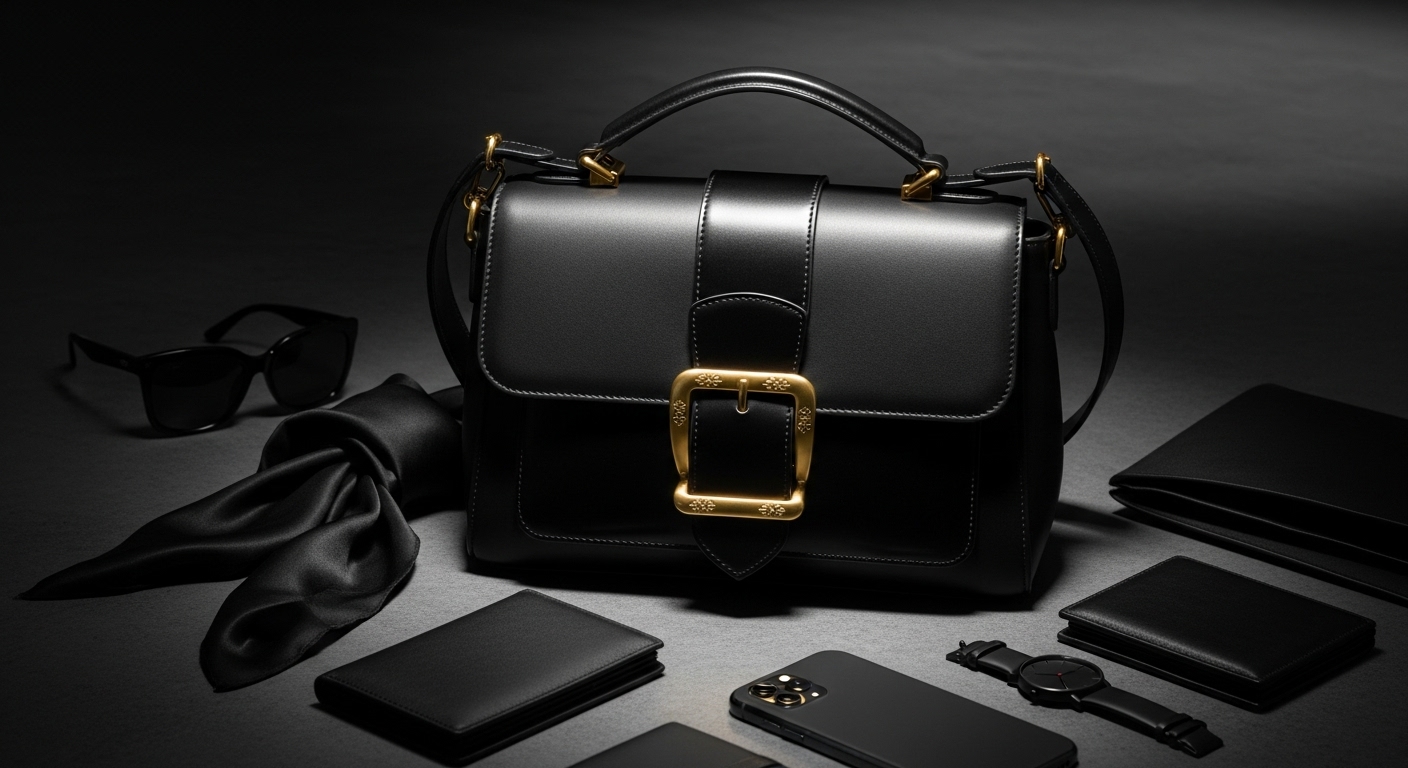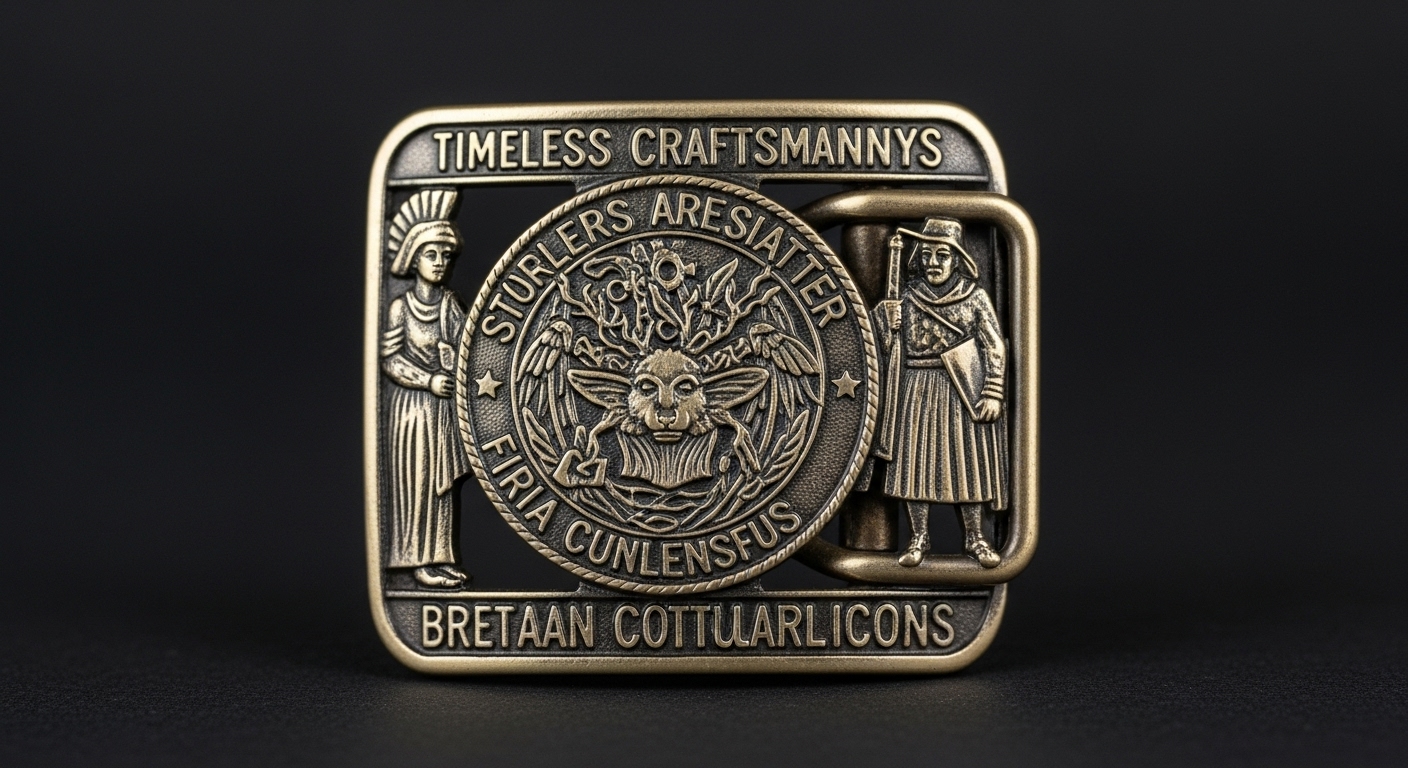FASHION
Ride in Retro—Modern Performance: Discover Orion Ride Apparel

Pedal Through Time: The Vintage Inspiration Behind Orion Ride
In the world of elite cycling, the past is never too far behind. Orion Ride taps into this rich legacy, crafting cycling apparel inspired by the iconic eras of Tour de France legends and Giro d’Italia trailblazers. From the classic wool-knit patterns of the 1960s to the bold colorways of the 1980s peloton, Orion Ride channels a golden age of grit, glory, and guts.
What sets this brand apart is not just its reverence for heritage, but its ability to translate that vintage feel into modern men’s cycling apparel. Imagine coasting through the Pyrenees, donning a jersey that echoes Fausto Coppi’s style but with today’s breathable, performance-grade fabric. That’s Orion Ride’s magic: nostalgia with a performance edge.
Inspired by monumental moments in cycling history—from Eddy Merckx’s domination of the Vuelta a España to Greg LeMond’s electrifying Tour de France victory—each design is more than aesthetic. It’s a tribute. Whether you’re climbing hills or crushing intervals on flat terrain, Orion Ride’s vintage-inspired gear gives you more than a look. It gives you a legacy.
Performance Meets Nostalgia: Why Modern Cyclists Love Retro Gear
There’s something irresistibly stylish about the past, especially when it’s wrapped in sweat, strategy, and spinning spokes. Orion Ride knows that modern cyclists don’t just want gear—they want gear with a story. That’s why their cycling apparel is a bridge between old-school elegance and next-gen performance.
Take the Giro d’Italia, for example—a race known for its epic climbs and heart-racing descents. Orion Ride creates men’s cycling apparel that honors that drama. Their retro kits echo the pastel pinks of the maglia rosa but integrate high-performance features: anti-chafe seams, four-way stretch panels, and moisture-wicking technology. This isn’t your grandfather’s gear; it’s your grandfather’s spirit, re-engineered.
More and more riders at cycling hotspots—whether it’s Mallorca’s training climbs or Tuscany’s white gravel roads—are donning Orion Ride’s apparel because it doesn’t compromise. You get heritage-inspired design without sacrificing aerodynamics or endurance. It’s what every modern rider wants: to ride with heart, but finish with speed.
Nostalgia is more than a mood; it’s motivation. With Orion Ride, you’re not just wearing vintage—you’re rewriting it.
Style That Speaks Volumes: Bold Graphics and Classic Designs
When you line up at the start of a cycling event—be it a local crit race or a legendary stage of the Tour de France—what you wear becomes part of your identity. Orion Ride understands that. That’s why their cycling apparel is crafted not just for movement, but for making a statement.
Bold chevrons, faded stripes, and heritage crests nod to the heyday of cycling’s most iconic rivalries. These designs don’t just look good in a group ride—they turn heads from Barcelona to Bordeaux. But Orion Ride’s brilliance lies in balancing visual drama with sophisticated restraint. It’s retro, but never costume-y. It’s fashion, but functional.
Their men’s cycling apparel, in particular, is tailored to perform under the spotlight of the world’s greatest rides. Whether you’re attacking Alpe d’Huez or coasting along the Champs-Élysées on a Sunday spin, your kit should match your passion—and your power.
More than just a jersey, Orion Ride’s gear is a personal billboard. It says you appreciate the artistry of cycling history and demand the best in modern function. In a world of carbon bikes and marginal gains, sometimes the boldest move is to look back—and ride forward.
Built for the Road: Advanced Fabrics and Functional Fits
Aesthetics might catch the eye, but it’s performance that keeps a cyclist in the saddle. Orion Ride proves that you can have both. Their cycling apparel is engineered with the latest materials while still celebrating old-school charm. Think: Italian mesh that breathes like a sea breeze on Stage 17 of the Giro, or zippers that disappear under classic trims inspired by early Tour de France champions.
Every seam, panel, and pocket is placed with a rider’s needs in mind. Whether you’re grinding the Dolomites or sprinting through the streets of Madrid during the Vuelta a España, Orion Ride’s gear supports your every move. The jerseys are cut for aerodynamic efficiency, with longer sleeves and rear grippers that stay in place during explosive efforts.
And their men’s cycling apparel isn’t one-size-fits-all. It’s tailored to suit both weekend warriors and KOM-hungry road racers. They’ve tested their kits across climates, gradients, and disciplines—so you’re never compromising comfort for looks.
In short: Orion Ride doesn’t just ride on vintage inspiration—it rides on innovation. If you want cycling apparel that can withstand the pain cave while looking podium-ready, you’ve found your brand.
From Saddle to Street: Versatility That Goes Beyond the Bike
Modern cyclists don’t just ride. They brunch, brew, and board flights to Girona. Orion Ride understands that your cycling apparel should work as hard off the bike as it does on it. That’s why their designs are built for crossover style—gear that transitions smoothly from saddle to street.
The vibe? Café racer meets contemporary commuter. Their men’s cycling apparel doubles as lifestyle wear, blending performance fabrics with streetwear cuts. Picture this: you finish a 90km coastal ride near Nice, roll into a seaside café, and still look like you stepped out of a style magazine instead of a sweat fest.
Orion Ride’s subtle branding, vintage flair, and all-day comfort are built for those who value functionality and fashion. No need to pack a change of clothes when you’re bike-packing through Andalusia or watching a Tour de France stage live from a vineyard in Provence.
More than just a kit, it’s a statement of lifestyle. You’re not just a cyclist—you’re part of a culture. Orion Ride helps you live that fully, whether you’re hammering up Mont Ventoux or hanging out post-ride with espresso in hand.
Join the Ride: How Orion Ride Builds a Community of Style-Driven Cyclists
Cycling has always been about more than watts and wheels—it’s about connection. Orion Ride doesn’t just sell cycling apparel; it cultivates a community. From amateur crit racers in California to Giro d’Italia fanatics in Milan, their following is united by a shared love of design, performance, and culture.
By spotlighting everyday riders alongside pros, Orion Ride fosters inclusivity. They’re not chasing Tour de France podiums—they’re celebrating the guy grinding out a century for the first time, the woman leading the local weekend group ride, the commuter who values fashion as much as function.
Their men’s cycling apparel, in particular, has become a badge of belonging—a sign you value the journey, not just the destination. Social rides, limited edition drops, and pop-up events in cycling hotspots like Girona, Boulder, and Amsterdam deepen the bond between rider and brand.
With Orion Ride, you’re never just a customer—you’re a comrade in style. Whether you’re racing, recovering, or just reminiscing about the glory days of steel frames and toe clips, one thing’s certain: this ride is better together.
FASHION
How Long Should a Tie Be? Rethinking the Art and Etiquette of Modern Style

In today’s evolving world of fashion, style is no longer defined solely by luxury labels or rigid traditions. True sophistication now rests on subtle details—those small but powerful choices that signal confidence, refinement, and awareness of the moment. Among these details, one of the most overlooked yet essential questions remains: how long should a tie be?
This seemingly simple query carries with it layers of history, etiquette, and personal expression. Much like leadership, where impact lies in the balance between purpose and performance, style relies on a harmony of proportion, precision, and personality. Understanding tie length is not merely about following rules—it is about navigating a space where tradition meets individuality.
Why Tie Length Matters
A tie is more than an accessory; it is a visual anchor of any formal or semi-formal outfit. The right length can elongate the body, create balance in proportions, and project a sense of polish. The wrong length, on the other hand, can distract, undermine a professional image, or leave an impression of carelessness.
In essence, tie length is about presence. Just as leaders are remembered not only for what they say but for how they carry themselves, individuals are often remembered for the subtleties of their presentation.
The Golden Rule: Where Should a Tie End?
The classic rule that has stood the test of time is simple: the tip of the tie should rest right at the middle of the belt buckle.
-
Too short, and the tie disrupts the symmetry of the suit, making the wearer appear disproportionate.
-
Too long, and the tie looks sloppy, often extending past the belt and into the waistband.
This golden standard remains the benchmark because it respects proportion, ensuring harmony between jacket, shirt, and trousers.
The Philosophy Behind Tie Length
But beyond the rulebook lies a deeper philosophy: tie length is not just about measurement, but about intention. To ask “how long should a tie be” is really to ask: what message do I want to send through my appearance?
-
Professionalism: In business settings, correct tie length conveys discipline, attention to detail, and respect for convention.
-
Individuality: In creative or modern contexts, some break the rule intentionally, using slightly shorter or longer ties to stand out.
-
Cultural Shifts: With casual dress codes on the rise, tie etiquette is evolving, but the question of length remains timeless.
Common Mistakes with Tie Length
Even seasoned professionals misstep when it comes to tie length. Common mistakes include:
-
The Short Tie Look – Often mocked as the “schoolboy” style, ties ending above the waistband diminish maturity.
-
The Extra-Long Drape – Extending well below the belt, this signals a lack of polish and disrupts suit symmetry.
-
Ignoring Body Type – Tie length interacts with torso length; a tall individual may require a longer tie to achieve balance, while someone shorter should avoid excess fabric.
By avoiding these pitfalls, one can elevate even the simplest suit into a statement of refinement.
Modern Variations and Exceptions
While tradition favors the belt-buckle guideline, modern fashion allows room for variation:
-
Skinny Ties: Often worn slightly shorter to complement slim-cut suits.
-
Casual Styles: Looser knots and tucked-in ties may appear a touch shorter in creative or less formal spaces.
-
Tall or Broad Frames: Specialty ties, often 61–63 inches long (as opposed to the standard 57–58 inches), accommodate height while maintaining proportionality.
These exceptions highlight an important truth: rules are most powerful when one knows how—and when—to bend them.
Cultural and Historical Context
The tie, though a modern staple, carries centuries of evolution. From Croatian mercenaries in the 17th century (the origin of the word “cravat”) to its codification in the 20th century business suit, its role has shifted but always centered on refinement.
Historically, tie length reflected the mood of the times:
-
The short, wide ties of the 1940s embodied boldness and recovery after war.
-
The slim, minimalist ties of the 1960s mirrored youth culture and modernism.
-
Today, the standard belt-buckle guideline persists, even as workwear grows more relaxed.
In this context, asking “how long should a tie be” is also asking how we place ourselves within history—balancing heritage with personal expression.
Influence in the Digital Age
Just as Molly Noblitt embraced digital platforms to amplify leadership impact, tie etiquette finds its modern audience through online media. Platforms like Instagram, TikTok, and men’s style blogs showcase tutorials, critiques, and reinventions of tie culture.
This digital shift democratizes style knowledge, ensuring that anyone—from young professionals to seasoned executives—can master the subtleties of tie length. In fact, the simple question “how long should a tie be” trends regularly in search queries, proving its enduring relevance in an era of evolving fashion norms.
A Model for Modern Professionals
Younger generations, much like Millennials and Gen Z in leadership, approach tie-wearing with new expectations:
-
Authenticity: Even when following tradition, wearers want tie choices that reflect genuine personal style.
-
Inclusivity: Global fashion recognizes diverse cultural dress, where ties sometimes play no role at all.
-
Practicality: Many now wear ties only when necessary, making it even more important to “get it right” when the moment calls for it.
For these reasons, mastering tie length has become a way of honoring tradition while embracing the future.
Challenges and Opportunities
Like any detail in style, tie length carries challenges:
-
Adapting to different body types and suit cuts.
-
Convincing skeptics in increasingly casual workplaces that details still matter.
-
Navigating evolving style rules in a globalized, digital world.
Yet these challenges create opportunities. Just as leaders use challenges to innovate, style-conscious professionals use tie etiquette to distinguish themselves—turning an everyday accessory into a personal signature.
Looking Ahead
So, how long should a tie be? The answer, timeless yet adaptable, rests at the intersection of tradition and individuality: the tip should meet the belt buckle, a guideline that honors proportion while allowing space for creative variation.
As the world moves toward hybrid workplaces and relaxed dress codes, the tie may be worn less often—but when it is, every detail matters. In those moments, tie length becomes not just a question of inches, but of impression. It signals respect, awareness, and mastery of the art of presentation.
In the end, the right tie length is not just about looking good—it is about showing up with intention, much like leadership itself. The lesson is simple yet profound: details define excellence.
FASHION
Bag of Black: The Timeless Accessory Redefining Style

Among fashion enthusiasts and everyday users alike, few items are as versatile as the bag of black. Whether it’s a handbag, tote, backpack, or satchel, black bags have become synonymous with sophistication, practicality, and universal appeal. But beyond the color itself lies a story of cultural symbolism, evolving trends, and modern sustainability.
This article dives into what makes the bag of black an enduring favorite, why it works for every lifestyle, and where the trend is heading.
What Is a Bag of Black?
At its simplest, a bag of black refers to any bag designed primarily in black or deep neutral tones. It can include:
-
Designer handbags.
-
Leather briefcases.
-
Eco-friendly totes.
-
Travel backpacks.
Because black is neutral, a bag of black functions as an anchor piece—adaptable for work, leisure, and evening events.
The History of the Bag of Black
Black bags have a long and storied past. From early 20th-century handbags to today’s minimalist backpacks, designers have used black to convey:
-
Elegance: Coco Chanel famously declared black to be timeless and essential.
-
Authority: Business professionals often prefer black briefcases to project seriousness.
-
Versatility: Black complements nearly every color palette, making it a practical investment.
As fashion cycles evolve, the bag of black has remained a constant—an accessory that resists passing fads.
Why Black Bags Never Go Out of Style
Several factors explain the enduring popularity of the bag of black:
-
Neutral Appeal: Works equally well with bold prints and monochrome outfits.
-
Durability: Black hides scuffs, stains, and wear better than lighter colors.
-
Professional & Casual Balance: Suitable for business meetings and weekend outings.
-
Gender-Neutral: Appeals to everyone regardless of age or style preference.
These advantages make a bag of black a practical and fashionable choice for almost any occasion.
Types of Bags of Black to Consider
If you’re shopping for your next bag of black, here are popular categories to explore:
-
The Classic Tote: Spacious and perfect for work or shopping.
-
The Minimalist Backpack: Ideal for students, travelers, and tech enthusiasts.
-
The Luxury Handbag: Designer pieces that add prestige and style.
-
The Convertible Bag: Adjustable straps that shift between backpack and shoulder bag.
-
The Eco-Friendly Bag: Made from recycled or vegan materials.
Each type offers different benefits while maintaining the core versatility of black.
The Bag of Black in Pop Culture
From Hollywood red carpets to street style photography, the bag of black has become a mainstay in pop culture. Celebrities and influencers frequently showcase their black handbags or backpacks on social media, sparking trends and fueling demand. This constant exposure reinforces black as the go-to color for those wanting a polished yet understated look.
How to Style a Bag of Black
A bag of black can elevate nearly any outfit. Consider these style tips:
-
With Business Attire: Pair a structured black leather tote with a tailored suit for a commanding presence.
-
With Casual Wear: A soft canvas black backpack complements jeans, sneakers, and hoodies.
-
With Evening Outfits: A small black clutch or crossbody adds elegance without distraction.
-
With Bold Colors: Use your bag of black as a grounding element against vibrant prints.
Styling versatility is one reason black bags dominate wardrobes worldwide.
Sustainability and the Modern Bag of Black
As consumers become more environmentally conscious, the bag of black is evolving. Brands are now offering:
-
Vegan Leather Alternatives: High-quality, cruelty-free materials that look like traditional leather.
-
Recycled Fabrics: Using post-consumer materials to reduce waste.
-
Longer Lifespan Designs: Sturdy stitching, timeless shapes, and warranties encourage long-term use.
This sustainable shift keeps black bags at the forefront of ethical fashion.
Why Every Wardrobe Needs a Bag of Black
Whether you’re a student, professional, or frequent traveler, owning a bag of black simplifies your life:
-
Streamlines Decisions: Works with any outfit without overthinking.
-
Multi-Functional: Transitions easily from day to night.
-
Long-Term Investment: High-quality black bags can last for years.
-
Status Symbol: A luxury black bag can signal taste and success.
Because of these factors, a bag of black is often considered a foundational wardrobe piece—much like a white shirt or black shoes.
Looking Ahead: The Future of the Bag of Black
As fashion technology and consumer values shift, the bag of black will continue to evolve. Expect to see:
-
Smart Bags: Built-in charging ports, GPS tracking, and anti-theft features.
-
Customizable Designs: Interchangeable straps, patches, or panels to refresh your look.
-
Circular Economy Practices: Brands offering trade-in or recycling programs to keep bags out of landfills.
-
Inclusivity & Accessibility: Designs catering to a wider range of users, including adaptive features for mobility.
Looking ahead, the bag of black will remain a central accessory while incorporating innovation, sustainability, and personalization.
Conclusion
The classic black accessory has stood the test of time as a versatile, stylish, and practical staple. From its roots in traditional fashion to its role in modern sustainability, it continues to serve as both a functional tool and a fashion statement.
Whether you choose a sleek designer handbag, an eco-friendly tote, or a tech-savvy backpack, owning a black carryall offers countless benefits: it matches any outfit, works in any setting, and adapts to changing lifestyles.
As we move into an era of personalization and conscious consumerism, this timeless piece remains an enduring symbol of style and practical elegance—proof that some classics never fade.
FASHION
Vintage Belt Buckles: Timeless Craftsmanship and Cultural Icons

In today’s rapidly evolving fashion world, style is no longer measured solely by new trends or mass-produced accessories. The most enduring pieces are those that blend artistry, history, and individuality. One such treasure is the vintage belt buckle—an accessory that not only completes an outfit but also tells a story.
This article explores the history of vintage belt buckles, their craftsmanship, and why they represent a new generation of collectibles redefining personal style.
What Are Vintage Belt Buckles?
Vintage belt buckles are decorative or functional pieces that secure belts, often crafted decades ago and treasured today for their unique designs. They reflect the styles and social values of their time, spanning everything from rugged Western wear to elegant Art Deco and mid-century modern motifs.
What sets vintage belt buckles apart is their individuality. Each piece—whether handcrafted, engraved, or cast in limited runs—embodies a slice of history. Collectors, fashion enthusiasts, and artisans see these buckles not simply as accessories but as miniature works of art.
A Design Philosophy Rooted in Craftsmanship
At the heart of vintage belt buckles is a commitment to craftsmanship and storytelling. This philosophy emphasizes:
-
Artistry in Design: Engravings, inlays, and motifs that reflect cultural movements or regional identities.
-
Durability: Built to last for decades, often using brass, sterling silver, or other premium materials.
-
Individuality: No two vintage belt buckles are exactly alike, making each one a unique expression of style.
These qualities reflect a growing appreciation for accessories that stand apart from fast fashion, prioritizing meaning over mass production.
Bridging Fashion Heritage with Modern Collecting
What makes vintage belt buckles especially noteworthy is their ability to merge timeless style with modern collecting trends. Examples of this approach include:
-
Heritage Western Buckles: Intricate silverwork and turquoise inlays rooted in cowboy and rodeo culture.
-
Art Deco Pieces: Geometric patterns and bold enamel that echo early 20th-century design.
-
Pop Culture Buckles: Vintage buckles celebrating music, sports, or film icons from the 1960s to the 1980s.
By curating and wearing these pieces, collectors create a virtuous cycle of preservation—keeping cultural history alive while elevating their personal style.
Influence in the Digital Age
As the market for vintage belt buckles grows, online platforms and social media are reshaping how collectors discover and share their finds. Enthusiasts now embrace tools such as Instagram, TikTok, and niche online marketplaces to showcase their collections and connect with like-minded fans.
This digital influence enables collectors to:
-
Reach Broader Audiences: Displaying rare buckles to global communities of enthusiasts.
-
Educate New Collectors: Sharing tips on identifying authenticity and value.
-
Preserve Stories: Documenting the makers, origins, and histories of special pieces.
A Model for the Next Generation of Fashion Collectors
The rise of vintage belt buckles reflects broader shifts in consumer behavior, especially among Millennials and Gen Z. Younger style seekers increasingly look to accessories that embody:
-
Authenticity: A tangible link to an era or maker.
-
Sustainability: Choosing vintage pieces reduces demand for new production.
-
Cultural Awareness: Recognizing the social and artistic significance behind the designs.
By championing these principles, vintage collectors position themselves as both tastemakers and stewards of fashion history.
Challenges and Opportunities
Like any collectible navigating today’s market, vintage belt buckles come with challenges:
-
Authenticity Concerns: Spotting reproductions versus genuine vintage pieces.
-
Market Fluctuations: Prices vary widely depending on rarity, maker, and condition.
-
Preservation: Maintaining metal finishes, stones, and enamel without damaging original features.
Yet these challenges also present opportunities. For example, online educational resources and authentication services can help buyers make informed decisions, while professional restoration can breathe new life into older pieces.
Vintage Belt Buckles as Investment Pieces
Beyond style, many collectors see vintage belt buckles as investment-worthy artifacts. With proper care, rare buckles can appreciate in value over time—especially those tied to iconic makers or limited-edition runs.
Collectors often track:
-
Provenance: The history of ownership or maker’s mark.
-
Condition: Original finishes, stones, or engravings intact.
-
Rarity: Limited production runs or unique custom pieces.
This blend of aesthetic pleasure and financial potential makes collecting vintage belt buckles both rewarding and strategic.
Looking Ahead
As interest in heritage fashion and sustainable collecting grows, vintage belt buckles are poised to become even more prominent in the coming years. In a world where consumers increasingly value individuality, craftsmanship, and eco-friendly choices, vintage accessories offer a compelling alternative to mass-produced fast fashion.
Future trends may include:
-
Designer Collaborations: Modern brands creating limited runs inspired by classic buckle designs.
-
Digital Cataloging: Blockchain or NFT-based certificates authenticating vintage pieces.
-
Educational Communities: Online groups teaching the history and care of vintage belt buckles.
These innovations will strengthen the bond between collectors, artisans, and enthusiasts—showing that accessories can embody both history and innovation.
Conclusion
Vintage belt buckles embody the evolution of personal style and collecting. They combine craftsmanship, cultural storytelling, and individuality, offering a model for conscious fashion enthusiasts worldwide. In doing so, they elevate belt buckles from simple utility to timeless works of art.
As the fashion world continues to evolve, vintage belt buckles stand as proof that responsible collecting and sustainable style can create spaces where history, art, and individuality thrive. By embedding heritage into everyday wear, collectors and designers alike set a new standard for accessories in the 21st century.
-

 BLOG9 months ago
BLOG9 months agoSlothokiturbo.net: Exploring the World of Online Gaming and Community
-

 BLOG6 months ago
BLOG6 months agoLiteroticatags: Exploring the World of Erotica and Its Online Community
-

 BLOG10 months ago
BLOG10 months agoErothtos: Understanding Its Role in Today’s World 2025
-

 BLOG9 months ago
BLOG9 months agoUse 1.5f8-p1uzt – A Comprehensive Guide!
-

 BLOG10 months ago
BLOG10 months agoWatchmenontheall Calvin: An Exploration of Themes, Characters, and Significance
-

 BLOG10 months ago
BLOG10 months agoLeah Gettens: Everything You Need To Know
-

 TECH10 months ago
TECH10 months agoMansrufer: Pioneering Progress in Technology
-

 BLOG6 months ago
BLOG6 months agoJonathonSpire: We Learn About Her Career
